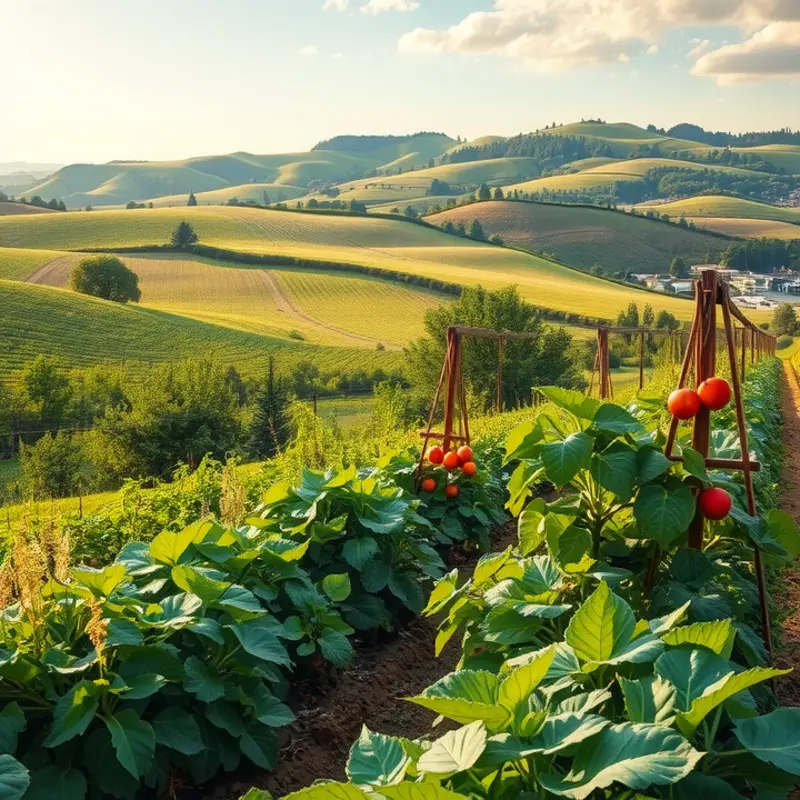Pizza is a beloved dish that brings joy to many, making it the perfect choice for home cooks looking to elevate their skills. With a few key techniques and tips, anyone can master the art of homemade pizza, whether you’re a novice or an experienced cook. This guide will break down essential elements that contribute to creating the perfect pizza, focusing on dough preparation, sauce selection, and ingredient combinations that will delight your taste buds and impress your family and friends.
Mastering the Dough: Foundation of a Great Pizza

Crafting the perfect pizza begins with the dough. Achieving that ideal chewy, crispy crust calls for attention to detail and understanding fundamental elements. Choosing the right ingredients, knowing how to knead properly, and respecting resting times will enhance your dough-making skills, turning each pizza night into a triumph.
Start with high-quality flour, as it is essential for the dough’s texture and flavor. While all-purpose flour can produce a good crust, using bread flour will contribute to a slightly chewier bite due to its higher gluten content. For an even more authentic taste, consider using Italian doppio zero flour, known for its ultra-fine texture and high protein content.
Next, gather your other ingredients. Fresh yeast, water, salt, and a touch of olive oil are standard. Fresh yeast can be substituted with active dry yeast if needed, but ensure it’s active by proofing it in warm (not hot) water before adding.
Once ingredients are ready, begin with mixing. Combine flour and yeast, gradually adding water until a rough dough forms. Use room-temperature water for better yeast activity, aiming for a hydration level around 60-65%. This balance ensures the dough remains pliable yet firm.
Kneading is the next crucial step. On a lightly floured surface, turn out the dough and begin kneading. Use a push-fold technique: push the dough away with the heel of your hand, fold it back over itself, and turn. Continue kneading for about 8-10 minutes until the dough is smooth and elastic. Well-kneaded dough will spring back slowly when poked.
Resting the dough allows gluten to develop and flavors to meld. Place your kneaded dough in a lightly oiled bowl, cover it with a damp cloth, and let it rise. Ideally, you should allow it to double in size, which can take 1 to 2 hours at room temperature. For a deeper flavor, consider a cold fermentation in the refrigerator overnight.
When you’re ready to shape your pizza, always handle the dough gently to preserve the air pockets that form during rising. Lightly press the dough from the center outwards, rotating as you go, to stretch it into your desired shape. Avoid overworking, which can lead to a tough crust. Be sure to keep the edges thicker for a puffed, chewy crust.
Baking is as important as the preparation steps. Preheat your oven to its maximum temperature and use a pizza stone if possible, as it promotes even baking and a crisp base. Remember, a hot surface is crucial for cooking the base without drying the toppings.
For those exploring diverse diets, consider using different grains or flours to create unique dough variations. For instance, trying a keto alternative can bring a fresh twist to your pizza experience. To explore more options, check out these delicious keto breadsticks that can accompany your pizza feast.
Mastering the art of pizza dough transforms homemade pizza from good to spectacular. With practice, you’ll create a crust that’s both a canvas and a culinary delight in its own right.
Sauces and Toppings: Create Your Flavor Masterpiece

Crafting the ultimate homemade pizza doesn’t stop at the dough. Once your dough is perfect, the next stage is to focus on the sauces and toppings. Each of these elements plays a crucial role in transforming your pizza into a culinary masterpiece.
When choosing a sauce, the classic tomato base is beloved for its simplicity and rich flavor. A traditional marinara or Neapolitan sauce works wonders, made from high-quality crushed tomatoes, garlic, and a sprinkle of herbs. If you’re looking to experiment, consider trying a pesto base—a vibrant and fragrant alternative that pairs beautifully with vegetables and white meats.
White sauce, often known as alfredo sauce, offers rich creaminess and serves as an excellent canvas for savory toppings. Mixing in some grated cheese can balance the heavy cream, enhancing its flavor profile to compliment various toppings.
For the adventurous, try a spicy barbecue sauce, bringing a smoky heat that’s perfect for bold toppings. This approach works well with grilled chicken or pork, creating a BBQ chicken pizza that’s full of character. When it comes to the sauce, the key is to spread it thinly and evenly to avoid overpowering the other ingredients.
Next is selecting the right toppings. Fresh, high-quality ingredients make all the difference. Always opt for fresh vegetables and meats whenever possible to ensure each bite is bursting with flavor. Consider seasonal produce for optimal freshness and taste. For example, tomatoes, basil, and mozzarella make a divine classic Margherita, exemplifying the beauty of simplicity.
The art of combining toppings is about balancing flavors and textures. Pair savory cheeses like mozzarella or cheddar with sweet elements like caramelized onions or pineapples. Complement your selections with varying textures by including crunchy elements like arugula after baking, which adds fresh pepperiness without overwhelming the palate.
Layering your toppings strategically can enhance your pizza’s texture and taste. Start with a layer of your chosen sauce, then follow with a sprinkle of cheese before adding your main toppings. Finally, add another touch of cheese for a melty finish. This technique prevents toppings from sliding off and helps each layer adhere effectively.
For those aiming for a gourmet touch, consider toppings like prosciutto, arugula, or figs for a sophisticated flavor medley. Meanwhile, nuts such as walnuts or pine nuts, lightly toasted, can add an unexpected crunch.
Tailor your pizza to any diet by swapping out ingredients mindfully. For instance, enjoy a delightful homemade pizza that fits ketogenic preferences by choosing compatible toppings and sauces, as highlighted in this article.
Ultimately, the best pizza reflects personal taste. Experiment with different ingredients to find your personalized blend. Whether sticking to a classic or venturing into gourmet territories, the right combination of sauce and toppings will always lead you to pizza perfection.
Final words
Homemade pizza is an exciting culinary adventure that allows for plenty of creativity and personal expression. By mastering the dough and taking care to select quality sauces and toppings, any home cook can produce a pizza that rivals those from pizzerias. Remember that practice is key; don’t be afraid to experiment with different flavors and textures. Invite your friends or family for a pizza night and share your creations. With these tips, you’ll not only enhance your cooking skills but also create unforgettable meals that bring everyone together around the table.







